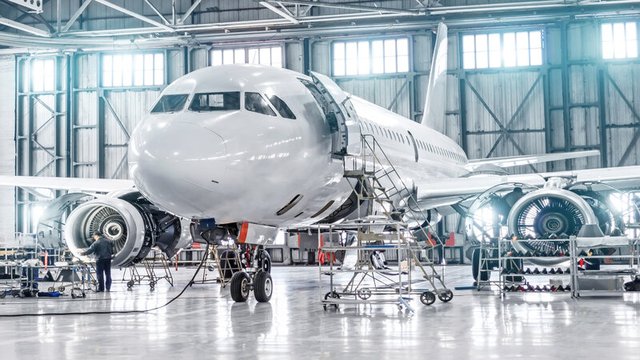Avionics systems are the central nervous system of modern aircraft. From navigation and flight planning to communications and automated flight control, virtually every flight relies on a complex web of electronic systems to operate efficiently and safely. But as aircraft become increasingly reliant on these digital technologies, the risks and realities of avionics failures—and how they intersect with broader aircraft maintenance issues—cannot be overlooked.
- What Is Considered an Avionics Problem?
- Root Causes of Avionics Failures
- Real-World Consequences of Avionics Problems
- The Overlap Between Avionics and Aircraft Maintenance Issues
- Preventive Strategies and Solutions
- The Importance of Redundancy and Failover Systems
- Industry Oversight and Continuous Improvement
- Conclusion: Moving Toward More Resilient Avionics
This article explores the most pressing avionics-related problems in aviation, their root causes, the consequences for flight operations, and best practices for prevention and resolution.
What Is Considered an Avionics Problem?
Avionics refers to all the electronic systems used on an aircraft. This includes:
- Navigation systems (like GPS, VOR, INS)
- Flight control systems (autopilots, flight directors)
- Communication systems (radios, transponders, datalinks)
- Engine and system monitoring
- Weather radar and terrain awareness systems
When any of these components malfunction, it can disrupt flight planning, pilot situational awareness, and even cause safety hazards—especially if the issue goes undetected or is poorly diagnosed.
Root Causes of Avionics Failures
Several factors can trigger or contribute to avionics issues. Here’s a look at the most common culprits:
1. Power Instability
Avionics systems rely on uninterrupted, regulated power. Electrical surges, dead batteries, or worn-out generators can cause system resets or erratic behaviors. These issues often manifest as intermittent faults that are difficult to replicate during ground checks.
2. Environmental Conditions
Extreme altitude, temperature swings, humidity, and electromagnetic interference (EMI) can all affect avionics performance. Moisture intrusion, especially, is notorious for damaging sensitive circuit boards and connectors.
3. Wiring and Connector Failures
According to Boeing and Airbus maintenance data, a significant portion of avionics problems stem from wiring and connector faults. Chafing, corrosion, or vibration-induced wear in cable harnesses can cause signal loss or short circuits.
4. Software Bugs and Updates
Today’s avionics systems often depend on millions of lines of code. A single software bug—or failure to update firmware in sync with other systems—can cause navigation anomalies, incorrect readouts, or even trigger false alarms.
5. Human Error
Improper installation, skipped diagnostic procedures, or failure to follow OEM instructions can introduce faults that become apparent only in flight. These types of mistakes are among the most preventable yet prevalent contributors to avionics failures.
Real-World Consequences of Avionics Problems
When avionics systems fail, the impact can range from mild inconvenience to serious safety concerns. Some of the most common consequences include:
- Loss of navigation accuracy
- Communication blackouts with ATC
- Failure of automatic flight control systems
- Inaccurate engine monitoring
- Unexpected alerts or alarms
For instance, a flight management computer (FMC) failure during descent could lead to altitude or heading deviations, especially if pilots are relying heavily on automation. In worst-case scenarios, pilots must switch to raw data and manual flying—a skill that’s becoming less common in highly automated flight decks.
The Overlap Between Avionics and Aircraft Maintenance Issues
Avionics problems often expose deeper aircraft maintenance issues, particularly in aging fleets or aircraft maintained without adherence to modern standards. Missed inspections, outdated documentation, and poorly trained technicians can all contribute to recurring failures.
In fact, data from the FAA and EASA show that many avionics failures occur not because of equipment defects, but due to improper maintenance practices or skipped compliance checks.
To learn more about how avionics problems connect with broader aircraft systems, this guide on aircraft maintenance issues provides a clear overview of how component-level faults can cascade into systemic risks.
Preventive Strategies and Solutions
To effectively reduce avionics problems, both operators and technicians must adopt a proactive mindset. Here’s what that looks like in practice:
1. Predictive Maintenance
Aircraft equipped with health monitoring systems can alert maintenance crews to performance trends and potential issues before they cause a failure. Predictive diagnostics using AI and machine learning are becoming standard in modern aviation.
2. Scheduled Inspections and Testing
Routine avionics checks—such as continuity testing, LRU (line replaceable unit) swaps, and connector inspections—are key. Built-In Test Equipment (BITE) systems also allow quick onboard diagnostics.
3. Training and Certification
Technicians trained in advanced avionics troubleshooting are better equipped to catch subtle issues that could otherwise be missed. Certification programs like the FAA’s IA (Inspection Authorization) or EASA Part-66 help maintain a high standard of maintenance reliability.
4. Environmental Controls
Proper sealing, grounding, and shielding of avionics compartments protect sensitive systems from EMI, moisture, and mechanical stress. Aircraft flying in high-humidity or salt-air environments (like coastal regions) need additional anti-corrosion protection.
5. Software Lifecycle Management
With so much functionality embedded in software, regular updates, version control, and regression testing are vital. Failure to align software across systems can result in miscommunication between components.
The Importance of Redundancy and Failover Systems
One of the key safeguards against avionics failures is redundancy. Commercial aircraft are often equipped with triple-redundant systems for flight control, navigation, and communication. When one system fails, backups automatically take over, minimizing pilot workload and safety risk.
Moreover, systems like the Enhanced Ground Proximity Warning System (EGPWS) and Traffic Collision Avoidance System (TCAS) rely on input from multiple sensors and databases—so cross-verification helps detect and isolate faults.
Industry Oversight and Continuous Improvement
Regulatory bodies like the European Union Aviation Safety Agency (EASA) play a major role in avionics oversight, setting standards for design, testing, and operation. EASA, along with the FAA, monitors field reports and enforces airworthiness directives when widespread issues emerge.
In response to past incidents, manufacturers and regulators have implemented improved fault isolation processes and required software updates for avionics components.
Conclusion: Moving Toward More Resilient Avionics
As technology advances, avionics will continue to grow more powerful—but also more complex. The aviation industry must keep pace with these developments through better training, tighter integration across systems, and smarter maintenance protocols.
Whether you’re flying a new Boeing 787 or maintaining a legacy Airbus A320, vigilance is key. Investing in robust avionics maintenance today not only enhances flight safety—it also prevents small glitches from escalating into major aircraft maintenance issues down the line.
For a broader understanding of how these systems tie into overall aviation safety practices, the FAA’s Avionics Safety Program is an excellent reference.















